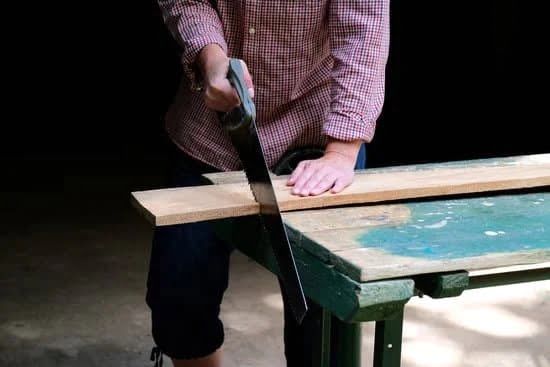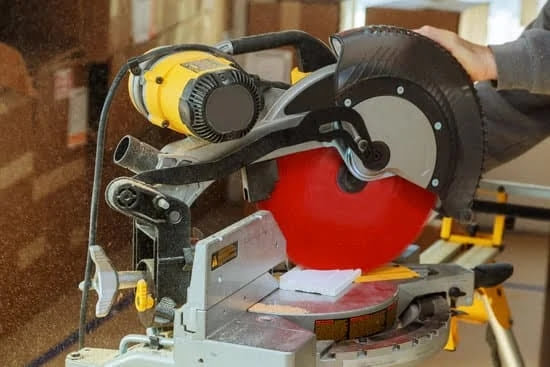When it comes to woodworking, the choice of tools greatly impacts the quality and precision of craftsmanship. That’s why Japanese woodworking tool sets have gained immense popularity among woodworking enthusiasts and professionals alike. With their unique qualities and impeccable craftsmanship, these tool sets are heralded as the best choice for any woodworking project.
Japanese woodworking tools are renowned for their exceptional reputation and rich history. The art of Japanese woodworking dates back centuries, with craftsmen passing down their skills and techniques from generation to generation. This legacy is evident in the meticulous design and unmatched precision found in Japanese tool sets.
The benefits of using Japanese woodworking tool sets are vast. These tools offer superior quality and precision, ensuring flawless results in every project. Their ergonomic design enhances efficiency and accuracy, making woodworking a more enjoyable experience. What’s more, the longevity of Japanese tools ensures that they will withstand years of use.
In this article, we will delve into the world of Japanese woodworking tool sets. We will explore essential tools found in these sets and discuss how they differ from their Western counterparts. Additionally, we will highlight specific projects where Japanese tools excel, share tips on choosing the right set for your needs, provide instructions on care and maintenance, and even introduce traditional techniques that can be mastered with these tools.
Get ready to embark on a journey into the incomparable world of Japanese woodworking tool sets. Whether you’re a seasoned woodworker or just starting out, investing in a Japanese tool set is sure to elevate your craft to new heights. Join us as we uncover the unique advantages and qualities that make these tool sets the best choice for any woodworking enthusiast or professional.
Benefits of Using Japanese Woodworking Tool Sets
Japanese woodworking tool sets offer numerous benefits that make them the preferred choice for both professional woodworkers and hobbyists alike. One of the main advantages of using Japanese tools is their superior quality and precision. Japanese tools are known for their exceptional craftsmanship, with meticulous attention to detail in every aspect of their construction. This results in tools that are incredibly sharp, durable, and reliable.
Another benefit of Japanese woodworking tool sets is that they enhance efficiency and accuracy in woodworking projects. The design of these tools allows for precise cuts and a high level of control, ensuring clean and crisp results. Whether it’s a simple task like cutting joints or intricate marquetry work, Japanese tools excel in providing accuracy and achieving fine details.
Apart from their performance, the ergonomic design of Japanese tools is also worth highlighting. These tools are crafted with the user’s comfort and ease of use in mind. Their lighter weight and well-balanced construction reduce strain on the user’s hand and arm muscles, allowing for longer periods of use without fatigue.
In addition to their functional benefits, Japanese woodworking tool sets have gained a reputation for their longevity. The combination of high-quality materials and expert craftsmanship ensures that these tools can withstand years of heavy use without losing their edge or structural integrity. With proper care and maintenance, Japanese tools can be passed down through generations.
Overall, using a Japanese woodworking tool set offers an unparalleled experience in terms of quality, precision, efficiency, comfort, and durability. These benefits make them an excellent investment for anyone serious about woodworking or seeking to elevate their craft to new heights.
| Benefits | Description |
|---|---|
| Superior Quality | Japanese tools are known for their exceptional craftsmanship |
| Precision | Provides precise cuts and a high level of control |
| Ergonomic Design | Crafted for user comfort and reduced strain on muscles |
| Longevity | Can withstand years of heavy use without losing quality |
Essential Tools in a Japanese Woodworking Tool Set
Japanese woodworking tool sets are known for their meticulous craftsmanship and exceptional quality. These sets typically include a variety of specialized tools that are essential for any woodworking project. In this section, we will explore the must-have tools found in a typical Japanese woodworking tool set, their purpose and functionality, as well as how they differ from their Western counterparts.
Japanese Hand Plane (Kanna)
The Japanese hand plane, or kanna, is one of the most iconic tools in traditional Japanese woodworking. It differs from Western planes in both design and function. A kanna consists of a wooden body with a sharp blade embedded at a slight angle.
This design allows for precise control and effortless shaving of small layers of wood. The blade is held firmly in place by a wedge mechanism and can be adjusted easily to achieve different thicknesses of wood shavings. The kanna’s razor-sharp blade combined with its ergonomic design makes it an indispensable tool for smoothing surfaces and creating highly refined finishes.
Japanese Chisels (Nomi)
Japanese chisels, or nomi, are renowned for their exceptional sharpness and durability. Unlike Western chisels that have flat backs, Japanese chisels have hollow backs which facilitate easier sharpening and reduce friction while cutting.
Additionally, their blades are made from extremely hard steel that can hold an edge for longer periods of time compared to their Western counterparts. Japanese chisels come in various shapes and sizes to cater to different types of cuts required in woodworking projects – from delicate paring chisels used for intricate joinery work to heavy-duty mortise chisels designed for removing larger portions of wood.
Japanese Saw (Nokogiri)
The Japanese saw, or nokogiri, is another indispensable tool found in every Japanese woodworking tool set. One distinguishing feature of Japanese saws is their pull-cut design, which means that the saw cuts on the pull stroke rather than the push stroke as in Western saws. This design allows for greater precision and control, resulting in cleaner and more accurate cuts.
The thin, narrow blades of Japanese saws also minimize wood wastage and reduce the effort required to make a cut. In addition to crosscutting and rip cutting, Japanese saws are well-suited for delicate tasks such as dovetailing or cutting designs into wood.
By incorporating these essential tools into a Japanese woodworking tool set, craftsmen can achieve unparalleled precision, efficiency, and quality in their projects. Whether it’s shaping intricate joinery or creating smooth finishes, these tools are designed with meticulous attention to detail and withstand the test of time. Next, we will explore the specific types of woodworking projects that are best suited for Japanese tools and how they excel in these applications.
Types of Woodworking Projects Perfect for Japanese Tools
Japanese woodworking tools are known for their precision and superior quality, making them particularly well-suited for certain types of woodworking projects. These tools excel in intricate and delicate work, allowing woodworkers to achieve exceptional craftsmanship. Whether you’re a beginner or an experienced woodworker, Japanese tools can elevate your woodworking experience and help you create stunning pieces.
One type of woodworking project that is perfect for Japanese tools is detailed joinery work. Japanese tool sets typically include saws, chisels, and planes that are specifically designed for precise joinery. The fine-toothed saws make clean cuts with minimal tear-out, while the razor-sharp chisels allow for precise shaping and carving of joints.
The flat-bottomed planes in Japanese tool sets are adept at creating smooth surfaces on joints, ensuring a tight fit. With these tools, woodworkers can easily create strong and seamless connections between pieces of wood.
Another area where Japanese tools shine is in the creation of fine furniture and cabinetry. The attention to detail and intricate designs often found in these projects require the use of precise cutting tools. Japanese hand saws such as the dozuki or ryoba excel at making clean and accurate cuts even in dense hardwoods.
Traditional Japanese planes like the kanna offer excellent control over shaving thicknesses and produce a glass-like finish when used correctly. Woodworking enthusiasts looking to create high-end furniture or cabinets will find that investing in a quality Japanese tool set is worth the cost.
Japanese tools are also highly recommended for those who work on small-scale projects such as carving or marquetry. The sharp blades of Japanese chisels make it easier to carve intricate patterns into wood without damaging the surrounding areas. These chisels often have longer blade lengths than their Western counterparts, allowing for greater reach and precision during carving work.
Additionally, Japanese rasps and files provide woodworkers with more control over shaping small details compared to traditional sanding methods. Whether you’re creating delicate carvings or inlay work, Japanese tools offer the precision and control needed to achieve stunning results.
How to Choose the Right Japanese Woodworking Tool Set
Choosing the right Japanese woodworking tool set is crucial to ensure a satisfying and efficient woodworking experience. With a wide variety of options available, it can be overwhelming to make the best choice. However, by considering a few important factors, you can select the perfect tool set that suits your skill level and project requirements.
Tips for Selecting the Appropriate Tool Set
- Determine your skill level: Consider whether you are a beginner or an experienced woodworker. For beginners, it is recommended to start with basic tool sets that include essential tools such as chisels, saws, and planes. Experienced woodworkers may prefer more specialized tools for complex projects.
- Project requirements: Different projects require different tools. Identify the types of woodworking projects you will be working on most frequently and choose a tool set that includes the necessary tools for those specific projects. For example, if you often work on intricate joinery or carving, look for a set that includes fine chisels and carving knives.
- Budget: Set a budget range before starting your search. Japanese woodworking tool sets vary in price depending on the quality and brand. It is important to strike a balance between affordability and quality.
- Quality and craftsmanship: Japanese tools are known for their superior craftsmanship and durability. Look for reputable brands with positive reviews from carpenters and woodworkers who have used their products extensively.
- Longevity: Consider the longevity of the tools when making your decision. Traditional Japanese tools are made to last for generations when properly maintained, so investing in high-quality tools can save money in the long run.
Recommended Brands
- Tsubaya: Known for producing high-quality hand-forged Japanese woodworking tools, Tsubaya offers a wide range of tool sets suitable for both beginners and professionals.
- Nishio: Nishio is renowned for its precise cutting tools such as Japanese pull saws and chisels. Their tool sets are designed to provide exceptional accuracy and ease of use.
- Gyokucho: Gyokucho specializes in saws and has been producing some of the finest Japanese woodworking tools for over 100 years. Their tool sets are known for their ergonomic designs and excellent cutting performance.
- Shapton: When it comes to sharpening stones, Shapton is a trusted brand among woodworkers. Investing in a high-quality sharpening stone is essential for maintaining the sharpness of your Japanese tools.
By following these tips and considering the factors mentioned, you can choose the right Japanese woodworking tool set that meets your specific needs and enhances your woodworking skills. Whether you are just starting out or a seasoned professional, investing in authentic Japanese tools will undoubtedly elevate your woodworking experience to new levels of precision and craftsmanship.
Care and Maintenance of Japanese Woodworking Tools
Japanese woodworking tools are known for their exceptional craftsmanship and longevity. To ensure that these tools continue to perform at their best, proper care and maintenance are essential. This section will provide step-by-step instructions on how to care for and maintain Japanese woodworking tools, as well as offer useful tips and tricks for sharpening and preserving the tool blades.
When it comes to caring for Japanese woodworking tools, one of the most important steps is keeping them clean and dry. After each use, it is recommended to clean the tools with a soft cloth or brush to remove any sawdust or debris. It is crucial not to leave any moisture on the tools, as this can lead to rusting. To prevent rust formation, wipe them dry thoroughly before storage.
Sharpening Japanese woodworking tool blades is another crucial aspect of maintenance. These tools have extremely sharp blades, which require regular sharpening to maintain their precision and performance. The process of sharpening depends on the type of tool, but typically involves using water stones or whetstones to achieve a razor-sharp edge. It is important to follow the specific instructions provided by the manufacturer or seek guidance from experts when sharpening Japanese tool blades.
In addition to cleaning and sharpening, protecting the tool blades from damage is also vital for their longevity. It is recommended to use protective covers or sheaths when storing or transporting the tools. This prevents accidental bumps or scratches that can dull or chip the blade edges. It is also advisable to store Japanese woodworking tools in a dry area away from extreme temperatures and humidity.
Taking proper care of Japanese woodworking tools ensures that they last for many years while maintaining their exceptional performance. By following these simple steps for care and maintenance, woodworkers can continue enjoying the precision and longevity that these tools offer.
Mastering the Techniques of Japanese Woodworking with Tool Sets
Japanese woodworking is not just about the tools, but also about the unique techniques and philosophies that accompany them. Mastering these techniques can elevate your woodworking skills and allow you to create beautiful, intricate pieces that are characteristic of Japanese craftsmanship. In this section, we will explore some traditional Japanese woodworking techniques and how they can be mastered with the help of Japanese tool sets.
One of the fundamental principles in Japanese woodworking is precision. The emphasis on accuracy and attention to detail can be seen in their joinery techniques such as the famous dovetail joints, mortise and tenon joints, and sliding dovetails.
These joints combine strength with aesthetics, creating seamless connections between wood pieces. With the high-quality and precise tools found in a Japanese tool set, such as chisels, saws, and planes, woodworkers are able to achieve tight-fitting joinery that enhances the overall integrity of their creations.
Another technique commonly used in Japanese woodworking is working with green or wet wood. This allows for greater flexibility in shaping and bending the wood to create curved or irregularly shaped pieces. In order to accomplish this, various tools like a kiridashi (traditional Japanese marking knife), ryoba (double-edged saw), and kanna (hand plane) are employed. These tools enable woodworkers to work efficiently with wet wood by reducing tear-out and ensuring smooth surfaces.
Furthermore, an integral part of mastering Japanese woodworking techniques is understanding the importance of grain direction when working with different types of wood. By carefully considering grain orientation and using specialized tools like kigoroshi (grain orientation marks) along with precise cutting techniques using chisels or planes, Japanese woodworkers achieve exquisite results that enhance the natural beauty of the wood.
To further delve into these traditional techniques and gain mastery over them, there are resources available that provide insights into how to best utilize Japanese tool sets. Books written by renowned craftsmen or instructional DVDs can guide aspiring woodworkers through the process of honing their skills and techniques. Additionally, attending workshops or joining communities that focus on Japanese woodworking can provide valuable hands-on experience and mentorship.
By mastering the techniques unique to Japanese woodworking, woodworkers can create pieces that not only showcase their craftsmanship but also carry the essence of an ancient art form. With the aid of high-quality tool sets, these techniques become more easily achievable, allowing for endless possibilities in creating stunning and functional works of art.
Real-Life Testimonials and Reviews
The Experiences of Woodworking Enthusiasts and Professionals
Japanese woodworking tool sets have gained a strong reputation among woodworking enthusiasts and professionals around the world. These craftsmen have experienced firsthand the exceptional quality, precision, and durability of Japanese tools. Their testimonials and reviews provide valuable insights into the advantages of using Japanese tool sets in woodworking projects.
One testimonial comes from John Davis, a seasoned woodworker who transitioned to using Japanese tools several years ago. He explains, “The difference between working with Japanese tools and Western tools is like night and day.
The level of precision achieved with Japanese chisels and saws is unmatched.” Davis goes on to describe how his workflow has significantly improved since adopting Japanese tools, stating, “The efficiency I’ve gained with these tools allows me to tackle more intricate projects in less time”.
Professional furniture maker Sarah Thompson also praises the ergonomic design of Japanese woodworking tool sets. Thompson shares, “As someone who spends long hours working with hand tools, comfort and ease of use are crucial. Japanese tools have an intuitive design that reduces strain on my hands and wrists, allowing me to work for prolonged periods without fatigue.” For professionals like Thompson who rely on their skills for a living, ergonomic features ensure prolonged sustainability.
Showcasing the Difference: Before and After
To visually demonstrate the impact of using Japanese tool sets in woodworking projects, many enthusiasts and professionals share before-and-after photos or videos online. Alan Palmer, a hobbyist woodworker, provides striking examples on his blog. In one post, he showcases two identical joinery cuts made with Western and Japanese saws side by side.
The cut made by the Japanese saw displays clean lines and minimal tear-out, while the Western saw leaves a rougher finish. This visual evidence reinforces the superior precision achievable with Japanese tools.
Similarly, a video posted by Emma Carter on YouTube demonstrates the process of carving intricate details with both Japanese and Western chisels. The video clearly illustrates how the Japanese chisel effortlessly glides through the wood, creating clean and precise cuts, while the Western chisel requires more force and leaves slightly jagged marks. These real-life examples leave no doubt about the remarkable performance of Japanese tools in action.
The testimonials and reviews provided by woodworking enthusiasts and professionals, as well as the visual evidence of their experiences in using Japanese woodworking tool sets, collectively highlight the undeniable advantages offered by these tools. From enhanced precision to ergonomic design, these testimonials and real-life examples make a compelling case for investing in Japanese tool sets to elevate one’s woodworking experience.
Conclusion
In conclusion, Japanese woodworking tool sets truly offer an incomparable experience for woodworkers of all levels. With their unique qualities, superior craftsmanship, and reputation in the industry, it is no wonder that Japanese tools are highly sought after by professionals and enthusiasts alike.
One of the major benefits of using Japanese woodworking tool sets is the superior quality and precision they provide. These tools are meticulously crafted and designed to ensure accuracy and efficiency in woodworking projects. The ergonomic design of Japanese tools also contributes to a comfortable and enjoyable woodworking experience. Additionally, the longevity of these tools is unmatched, allowing woodworkers to rely on them for years to come.
A typical Japanese woodworking tool set comprises essential tools that cater to various project requirements. From chisels and saws to planes and carving knives, each tool serves a specific purpose with exceptional functionality. Not only do these tools differ from their Western counterparts in design and construction, but they also possess a level of craftsmanship that reflects centuries-old traditions.
Japanese tools are particularly well-suited for intricate and delicate woodworking projects. Their precision and finesse make them ideal for working with small details or creating complex joinery. Whether it is crafting intricate scrollwork or sculpting detailed patterns, Japanese tool sets enable woodworkers to achieve unparalleled results.

Hi everyone! I’m a woodworker and blogger, and this is my woodworking blog. In my blog, I share tips and tricks for woodworkers of all skill levels, as well as project ideas that you can try yourself.





